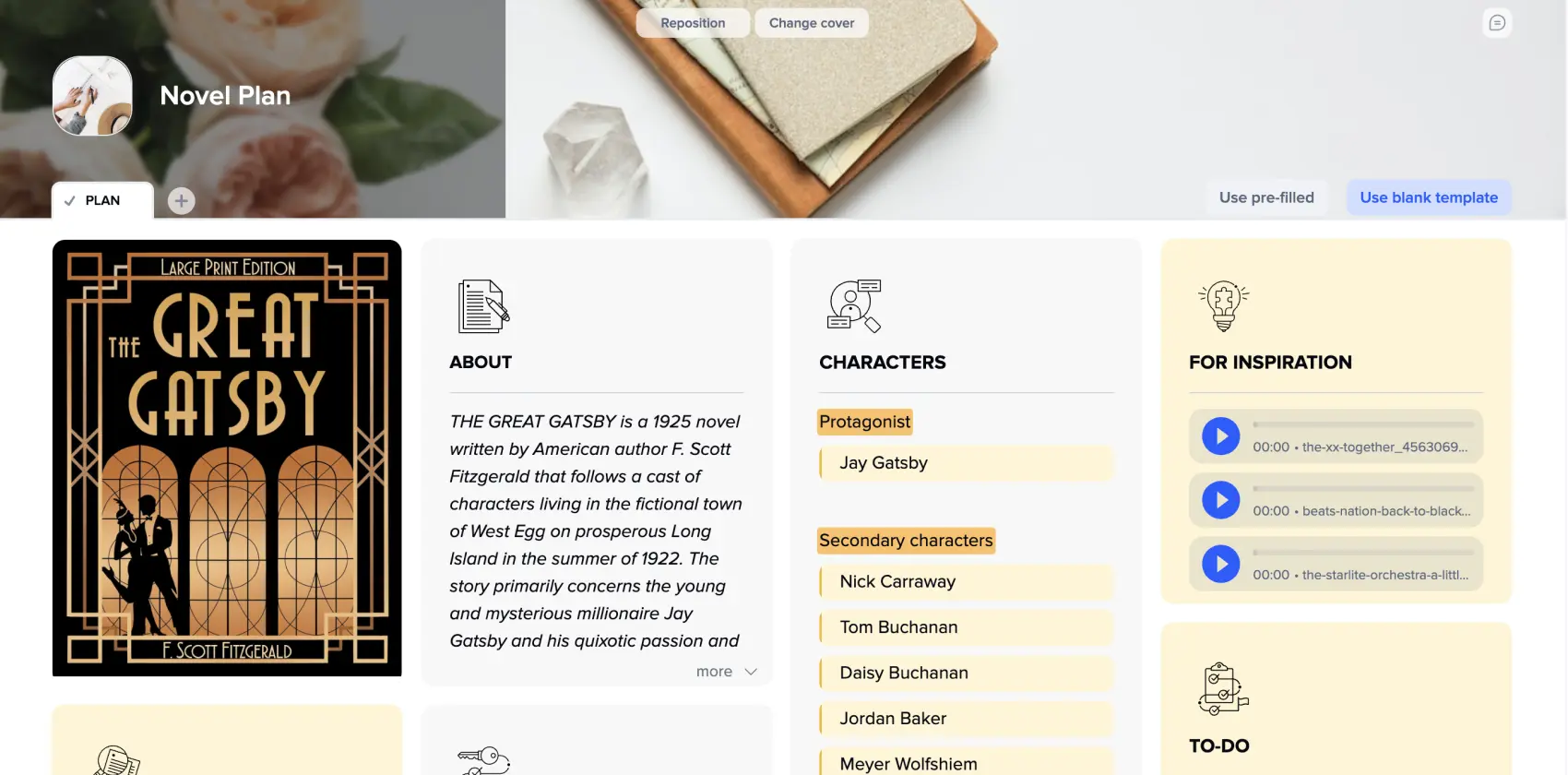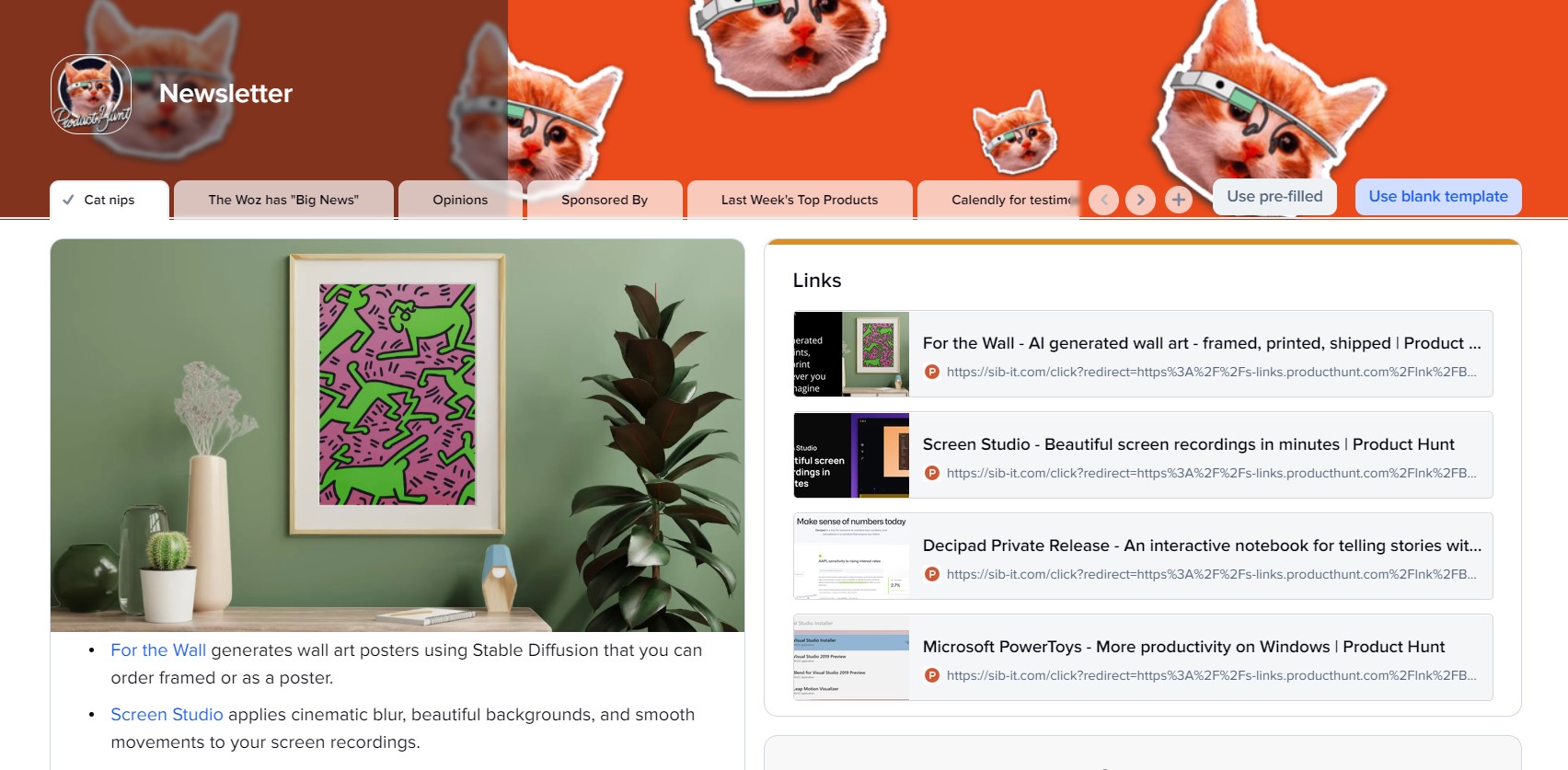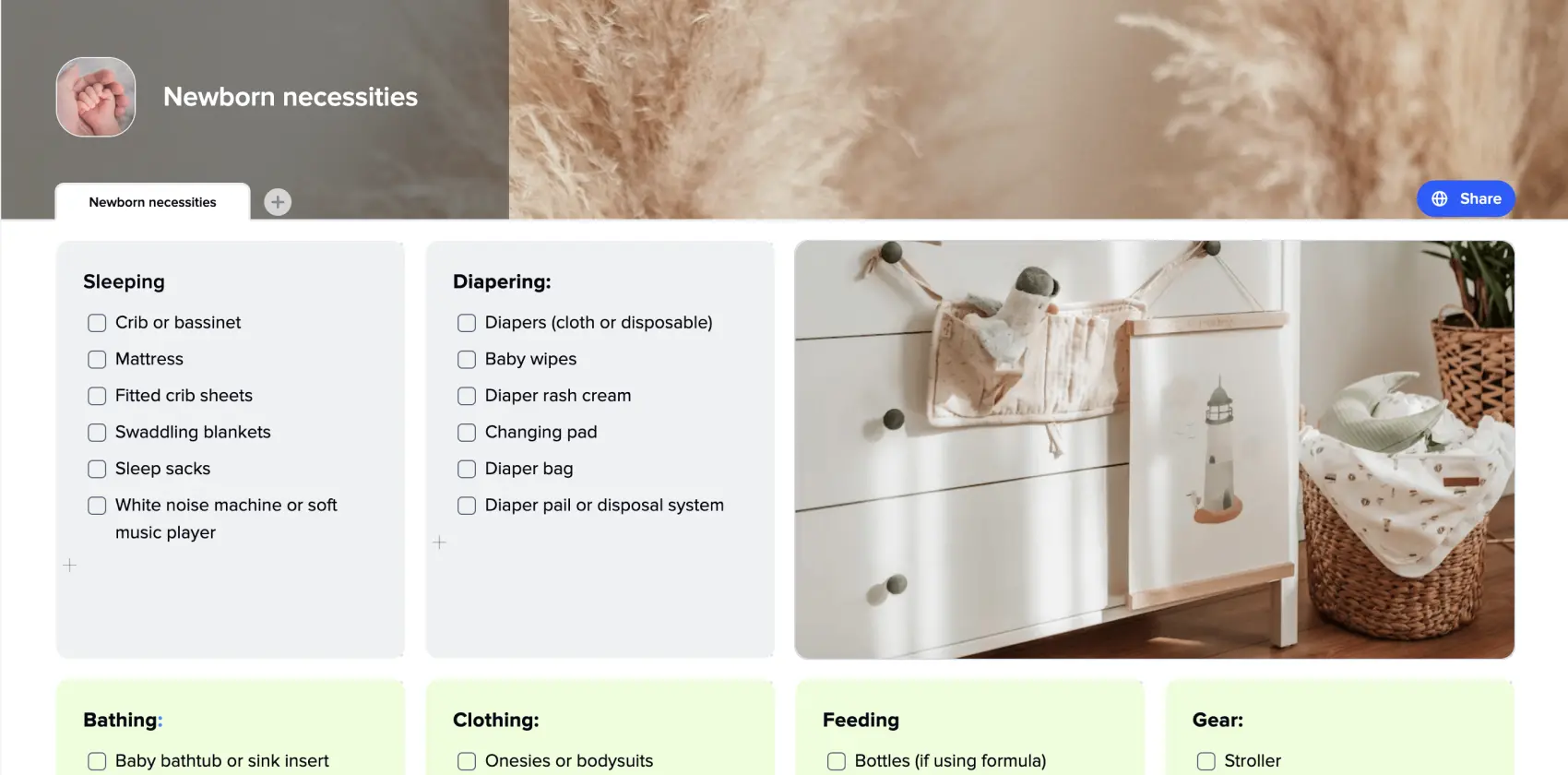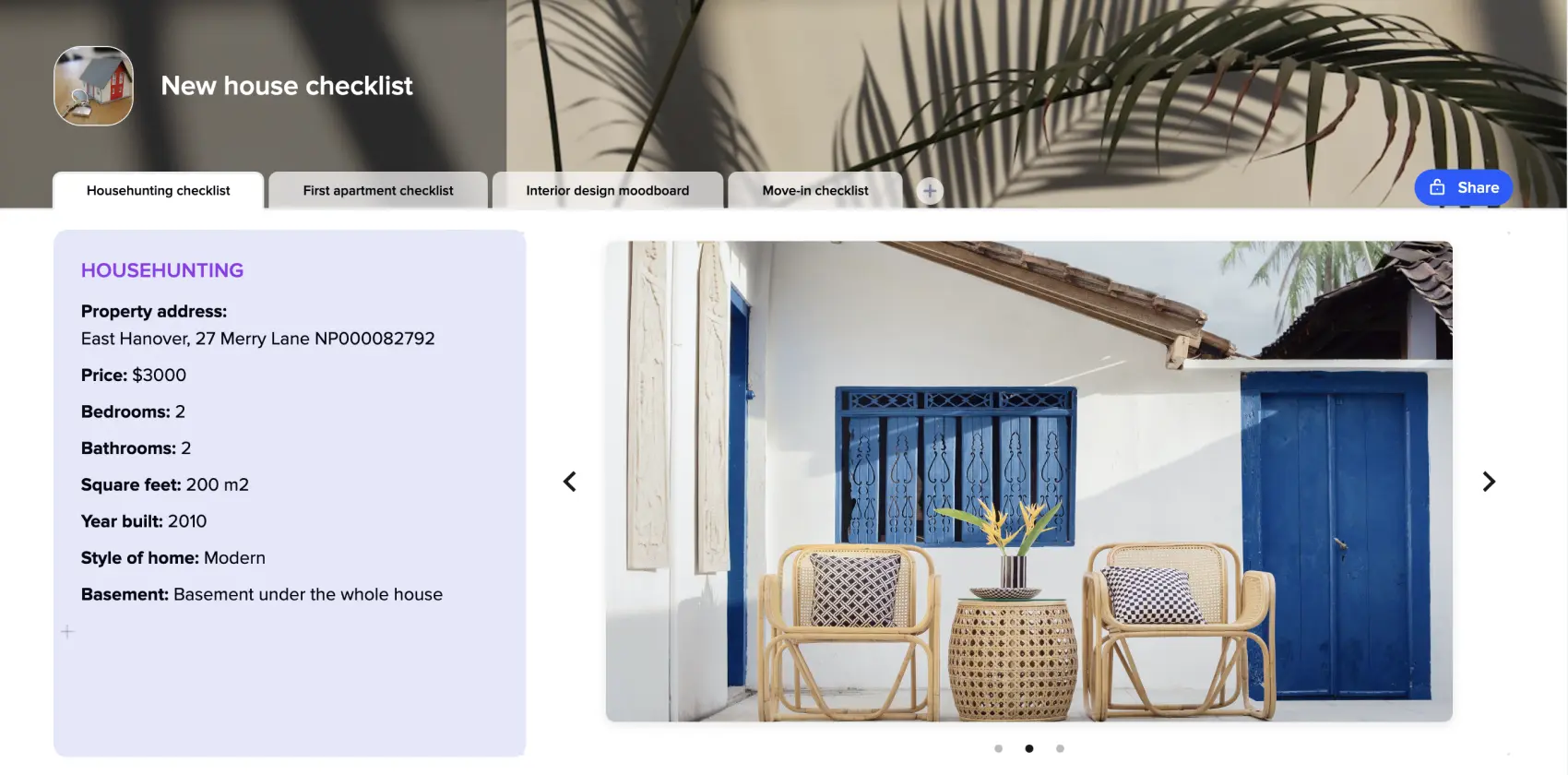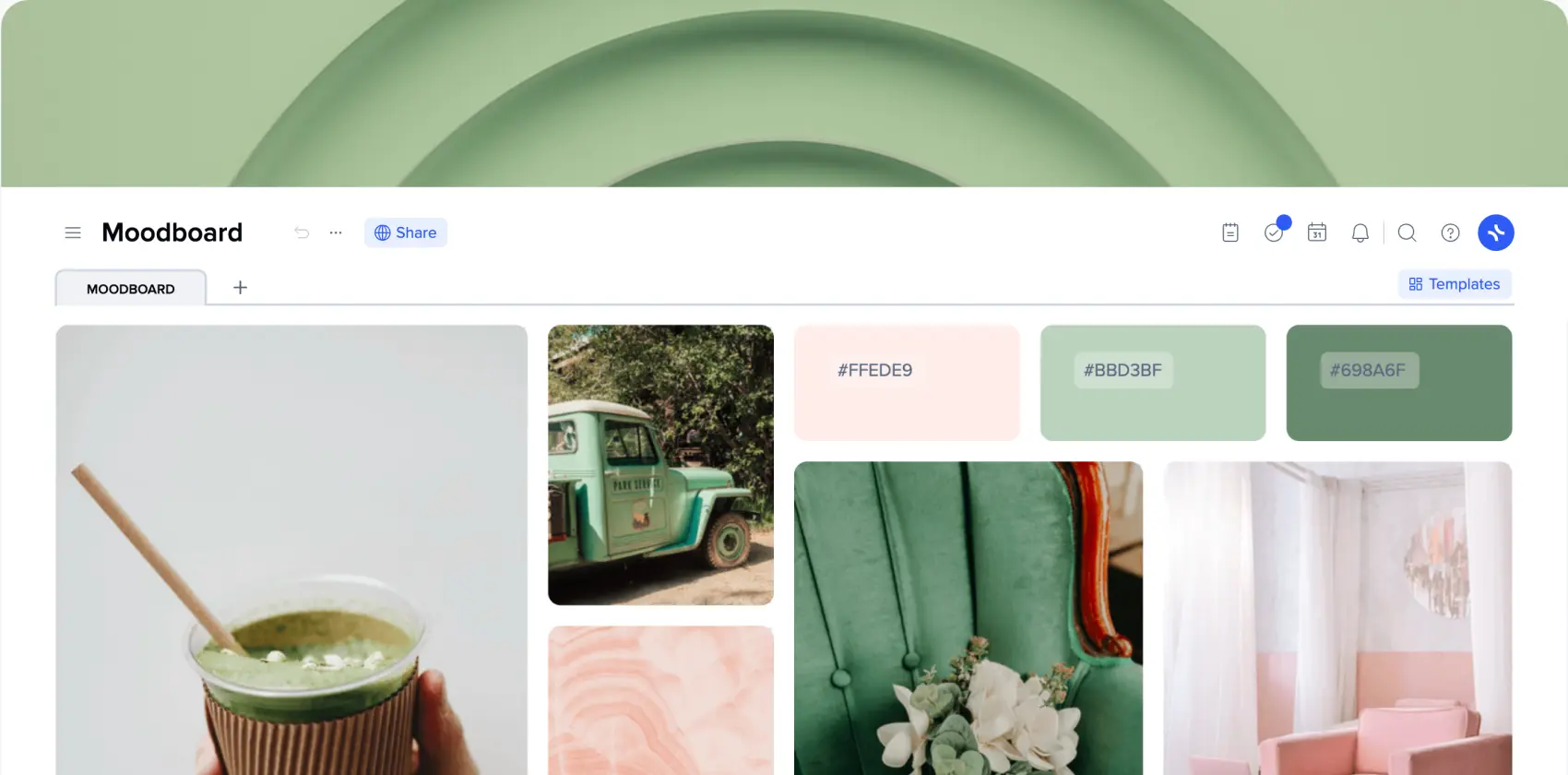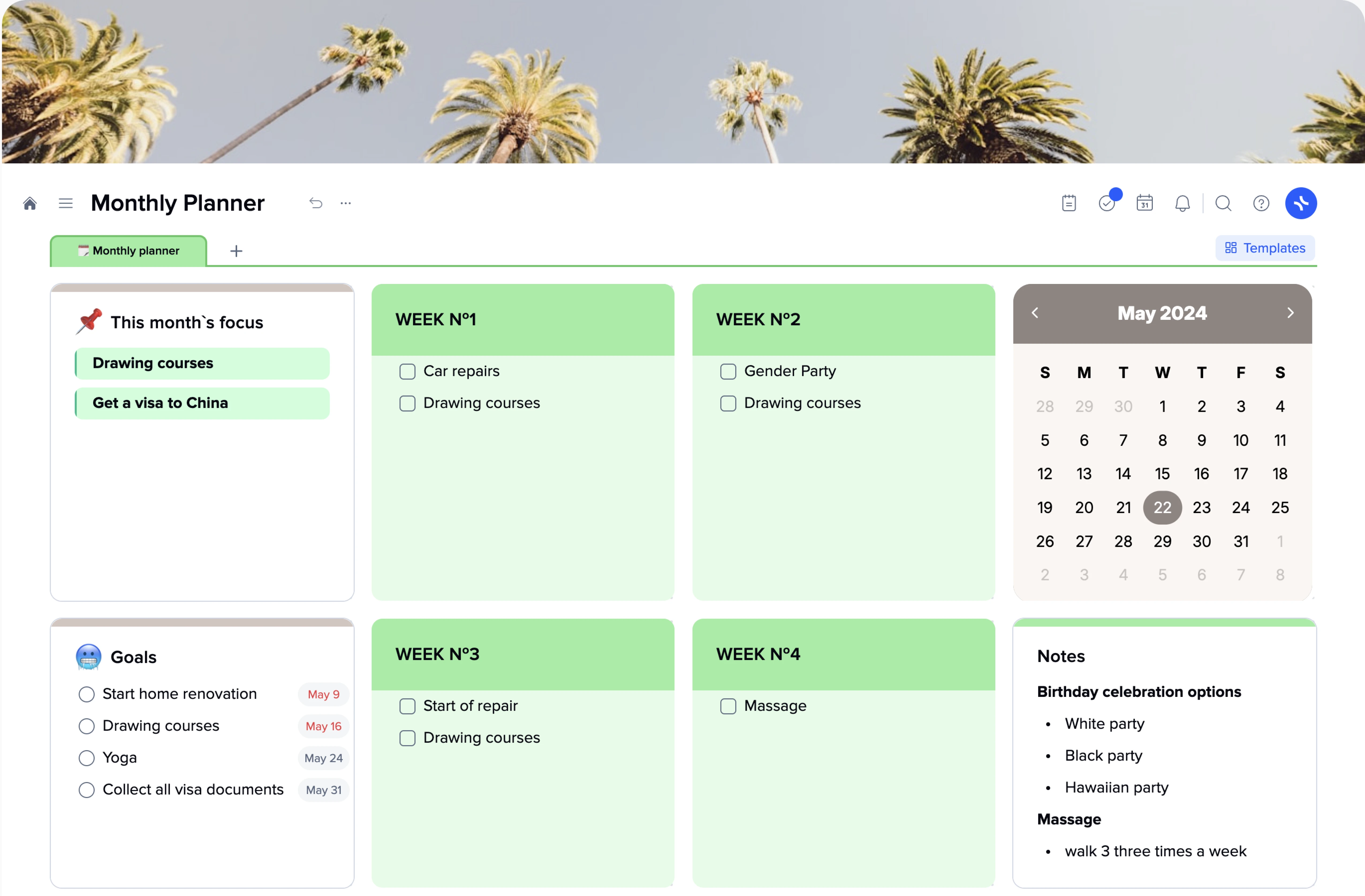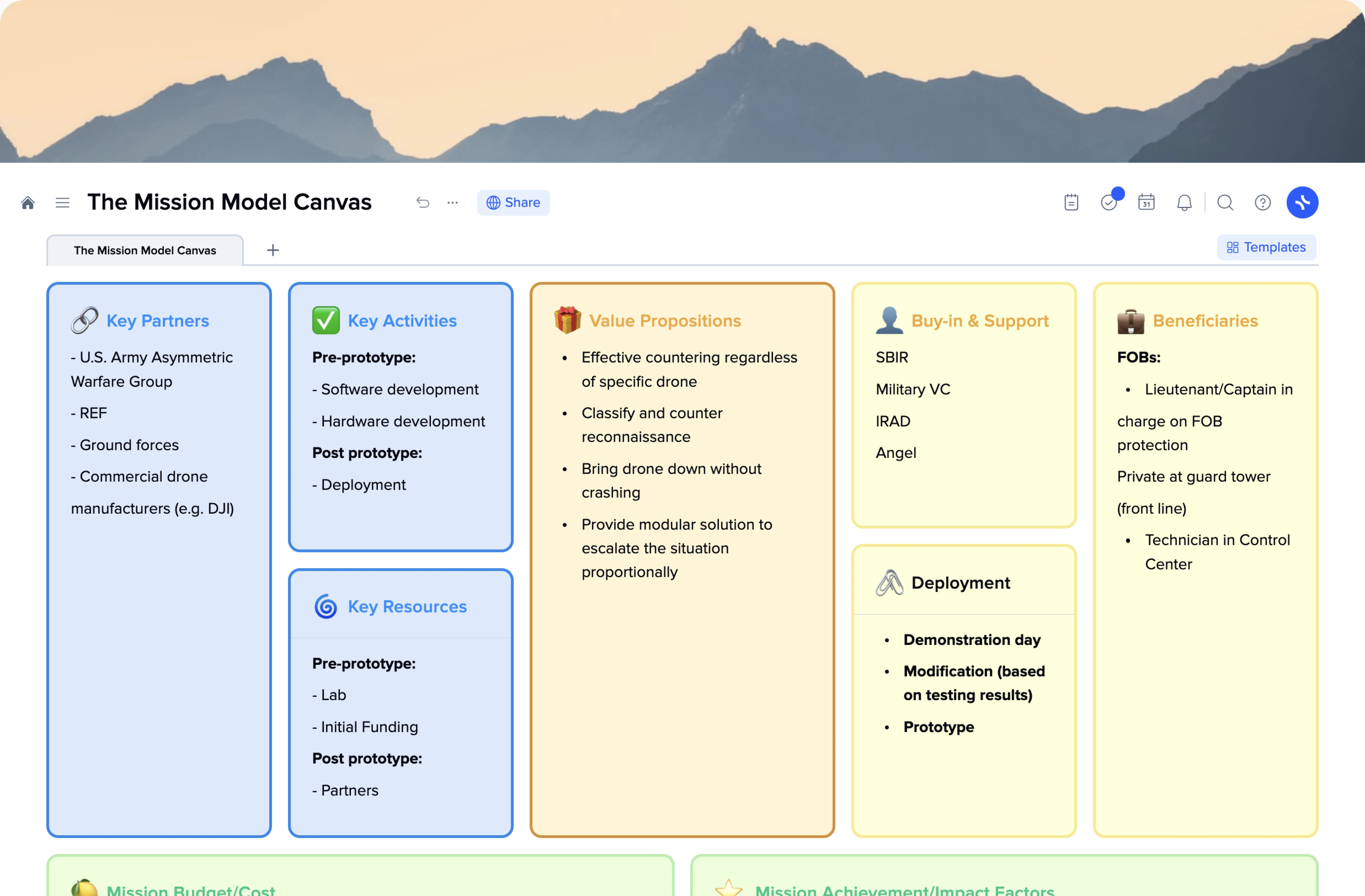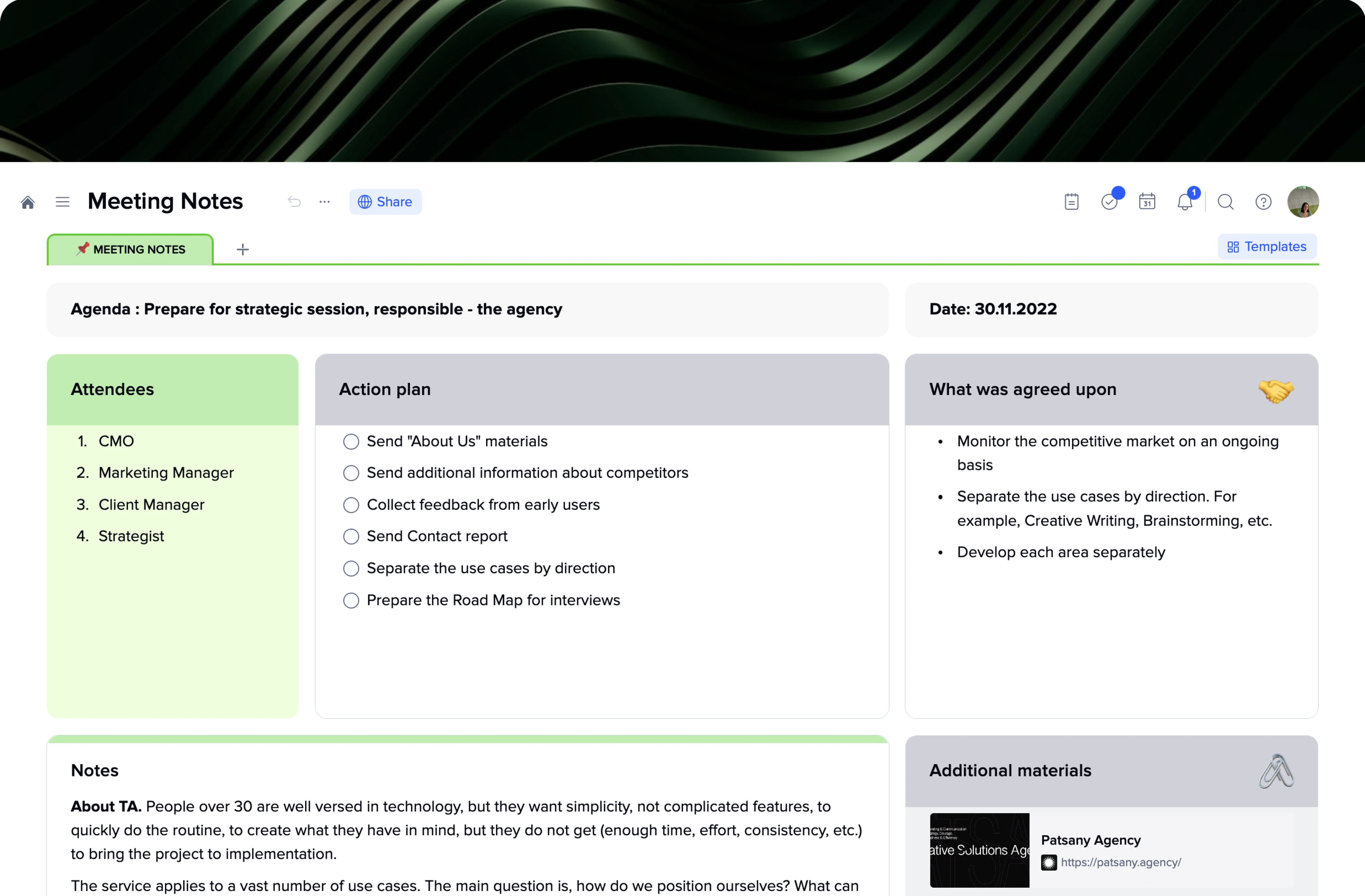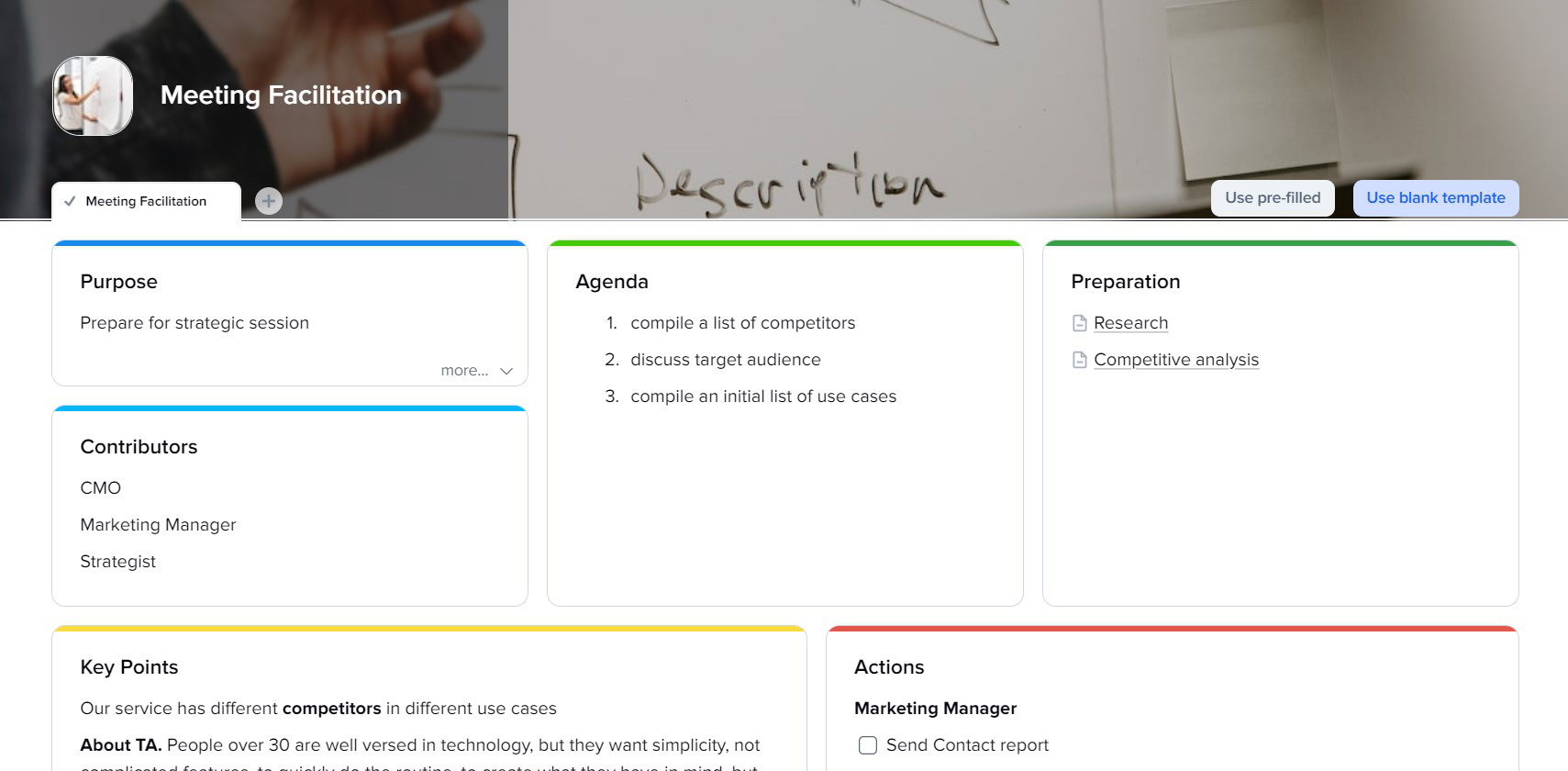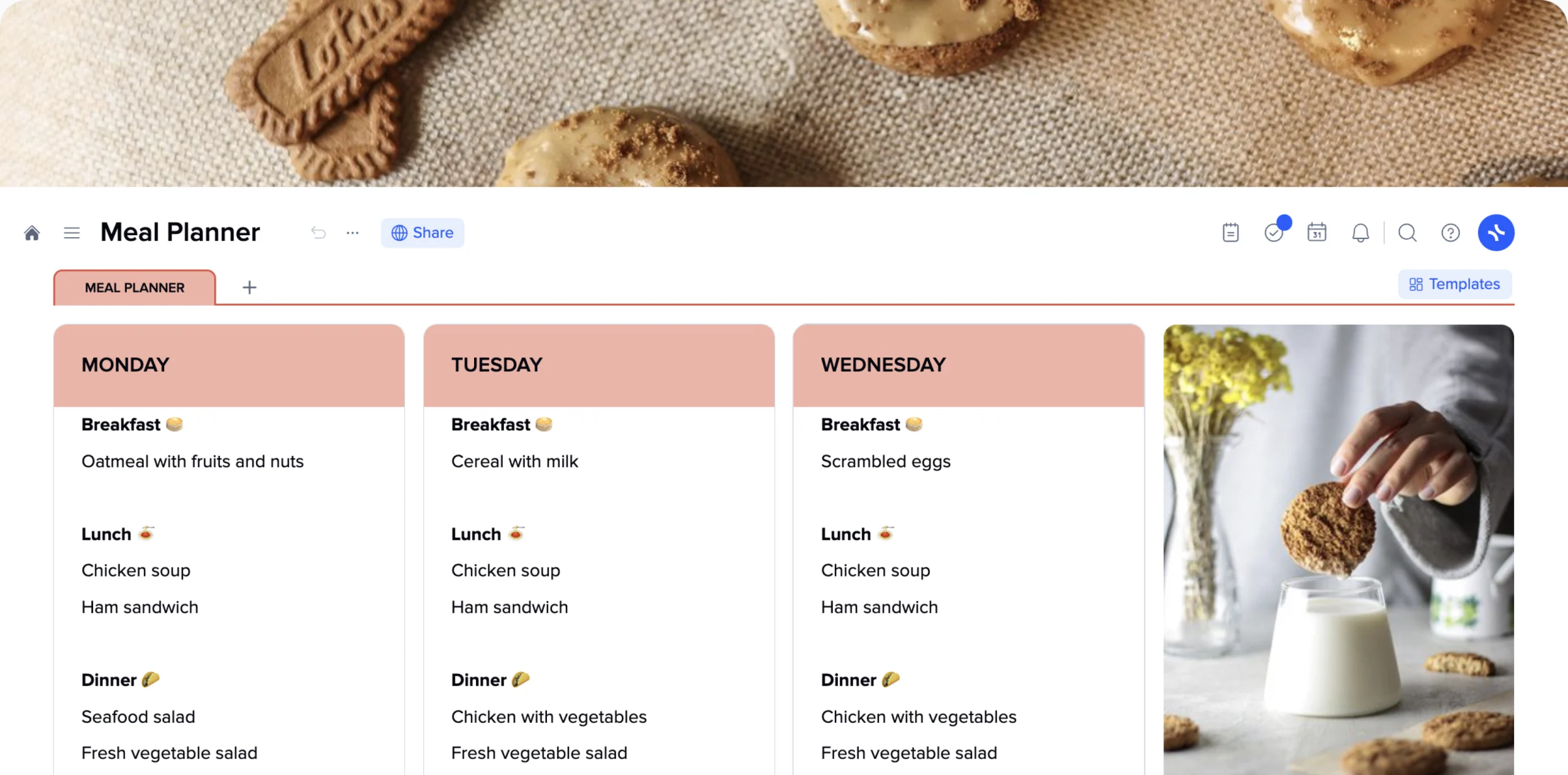📌 Novel Plan Template
A free novel plan template is suitable for authors just thinking about creating their own books. Here you can collect scattered ideas, describe the characters, brainstorm, and set the mood with the appropriate mood board.
A novel planning template will help you with your plot structure, hero’s journey, main characters, protagonist motivation, synopsis, etc., whether you’re a novice writer or a tough skilled author. Your ideas, suggestions, doubts, and interesting facts need a place to be organized for organic implementation into your story.
Pre-designed templates for writers can be of different kinds. Besides traditional novel plan templates that are one-size-fits-all solutions, writers can also use a hero’s journey template, character profile template, or three-act structure template.
You may decide on using all of them at the same time (which is a good idea if you’re working on a big text) or the one that is universal and helps to overcome main issues while you’re first mapping out the story outline and then developing it step by step.
Writing is an ongoing process of trial and error. You write, you delete, you write again, you edit, you delete, and so on until you get an entire novel you are proud of and ready to present to the world. The path between “beginning writing” and being “originally published” sometimes takes years of polishing, but don’t let this fact scare you. Writing is also about joy, not necessarily success.
Crafting exceptional stories requires substantial effort and life experiences. As you embark on your storytelling journey, be prepared for the possibility that it may prove more challenging than anticipated and sometimes inspiration strikes not so often as you would imagine. However, modern writers have many tools at their disposal to make the process of writing more convenient, satisfying, and faster.
While story novel plan templates do not solve all the challenges writers encounter because there are always new ones that depend on working style, writing style, new tendencies in the industry, etc., they significantly mitigate the impact these challenges might have on the writing process. These templates assist in organizing your thoughts, providing structure, and offering long-term benefits for your writing endeavors.
The xTiles Novel Plan Template is a solid foundation for various writing styles and story types, regardless of the genre you’re pursuing, be it a sci-fi thriller or historical fiction. Moreover, it is highly customizable and does not restrict you from implementing your most imaginative writing ideas.
What is a novel plan?
A novel plan serves as a fundamental blueprint for a future story, mapping out the major events, plot points, and character development process that will unfold. Authors often incorporate characters, settings, and key elements into the plan to gain clarity and analyze the story to avoid misconceptions, mistakes, and dead ends.
The level of detail in a novel plan can vary based on the writer’s preference and the novel itself. The more characters, settings, and longer timelines you have, the bigger your plan needs to be to keep everything in order within the text.
Neglecting a story outline (even if you’re working on a short story) can lead to confusion and mistakes in the final text, even involving editors or proofreaders might not help. Even successful writers can sometimes overlook inconsistencies, resulting in published texts with errors.
What is a novel plan template?
Utilizing a novel writing plan template streamlines the outlining process, enabling writers to plan each aspect of their future story based on their initial idea and maintain consistency throughout the writing journey.
Creating a solid plan with appealing elements that speak visually and lead in the right direction can be time-consuming. If you encounter limitations in customizing the outline according to your preferences, it may discourage you from using a novel writing plan altogether.
In contrast, xTiles Novel Plan Template is highly customizable and allows for easy sharing and modifications, empowering you to represent ideas on different levels using various expressive means.
The xTiles Novel Plan Template offers several benefits to writers:
-
Organizing the story. A novel outline template ensures that every detail finds its rightful place, preventing authors from getting lost in excessive details, descriptions, twists, or information about characters and settings. If you use a Snowflake method, it will help you build complex elements upon the baseline.
-
Time-saving. With a predefined structure, a template saves writers from overlooking important details and provides a solid foundation to build upon when they begin writing.
-
Adaptability. As stories evolve and intentions change, a template allows for easy modifications and adjustments, accommodating shifts in the narrative.
-
Consistency. A template helps maintain coherence and cohesion by ensuring the consistency of character traits, plot points, and other vital elements.
-
Focus. By guiding writers in adhering to the overall direction of the narrative, a template prevents distractions from tangents or irrelevant details.
How to plan a novel using the xTiles Novel Plan Template
Since the template saves you from the preparation stage, you have more time for actual planning and idea development. Additionally, it serves as a framework for building a skeleton of your future story.
This template is strengthened with a step-by-step guide on how to outline your story:
Research everything there is to know about the topic of your novel
Conducting thorough research is an essential preliminary step in the writing journey. Research is a launching pad for fresh ideas, infusing your story with substance and credibility. New insights and perspectives will surface by consolidating your research in a single location.
When it comes to conducting research, platforms like Wikipedia, thematic blogs, forums, communities, and news websites become invaluable resources. These sources offer a treasure trove of historical events, records, data, and diverse opinions pertaining to your topic. However, don’t neglect the ordinary world, as it has a lot of amusing things to offer that can be reconsidered and developed to become a great story. New friends you meet can become your characters, places you visit can become your setting, etc.
Using videos and movie clips may provide a deeper understanding of a mood or emotion. Explore platforms like Vimeo or YouTube by searching for content related to your topic or era.
Podcasts offer another valuable resource. Look for conversations on Spotify or any podcast platform that revolves around your topic, and incorporate them into your research process.
Another great way to get a swift and vivid understanding of a topic is through images and photos. They possess the ability to transport you to different times and places, aiding in detailed descriptions. Additionally, images are convenient to scan through when revisiting your research. Consider looking for images from platforms such as Google Images, Pinterest, Instagram, different photo stocks, etc.
Research may continue while you’re writing your novel. When you accidentally stumble upon something interesting or useful after your formal research is finished, wasting it would be a crime. It’s essential to have a convenient method for recording on the go to ensure you don’t miss out on capturing those moments.
The xTiles Web Clipper will help you capture everything you find interesting and helpful for your story when surfing the web. And the xTiles Mobile App will help you jot down any idea on the go.
Brainstorm
You have an idea and a lot of information and facts after your research. Now is the perfect time to combine your imagination with the data you found to create something tangible. Brainstorming serves as the ideal approach for this task.
Brainstorming, a timeless creative method, enables rapidly generating fresh ideas. It empowers you to conjure new characters, settings and even delve into the themes you aspire to incorporate in your book.
However, where to start? What will be the starting point? Start with the central idea or concept of your story. It may be a rudimentary idea or a subject you wish to delve into, but this approach will assist you in exploring its potential. Jot down a brief note encapsulating your concept in one to two sentences to initiate the process.
Now, embrace your creativity and let the ideas flow freely. Begin by incorporating any concepts that are connected to your central idea. Consider various elements of your story, such as settings, characters, or even the historical background of your topic. Let nothing stop you because the time to evaluate your ideas has not come yet. At this stage, producing as many ideas as possible and freeing your mind is important.
While delving into different tangents, it’s time to bring order to your ideas by identifying themes.
Begin by clustering similar ideas and assigning each group a title for easy reference. Your ideas might naturally align with categories like story, location, characters, or scenes, but feel free to organize them however you see fit. There are no strict rules in this process. You’re the artist, and you can do whatever you want with your ideas and story. Experiment, go crazy, invent the new wheel, and the xTiles Novel Plan Template will help you with that.
Outline your future novel
Now that you have all the information gathered and organized, outlining your novel won’t be complicated. By putting together the key facts needed for your novel, you save yourself from chaos and inconsistency that might occur in your text since it’s impossible to keep everything in your head.
An outline for your novel serves as a roadmap or blueprint, allowing you to envision the overall structure and plan the progression of scenes, characters, and ideas that will shape your narrative. It is particularly beneficial for writers who thrive on visualizing the big picture as a series of interconnected events.
Begin by charting the significant scenes or pivotal events that you have identified thus far. These could encompass crucial turning points, important locations, or unexpected plot twists. Writing a novel is always an exciting experience. However, it can also be quite a daunting experience if you need help figuring out how to plan a novel, where to start, or what framework to use.
Be ready that even the most detailed outline might not guarantee your first draft will be good.
How do you write a novel plan?
To write a novel plan, start by brainstorming ideas for your story, including characters, setting, and major plot points. Once you have a general idea, outline the main structure of your novel, breaking it down into acts or chapters. Identify key events, character arcs, and any major twists or conflicts. Develop detailed character profiles, including their backgrounds, motivations, and relationships. Create a timeline or storyboard to visualize the sequence of events. Finally, review and revise your plan as needed to ensure a coherent and compelling story. A novel plan serves as a roadmap to guide your writing process and provides a solid foundation for crafting your novel.
How do you plan a novel fast?
To quickly plan a novel, using xTiles can be a valuable tool. Start by using the available templates or creating custom boards for character profiles, plot outlines, and scene organization. Use the drag-and-drop feature to easily rearrange and modify your ideas. Utilize labels, tags, or color-coding to categorize and track different elements of your story. Take advantage of xTiles’ collaboration features to brainstorm and gather feedback from others. With its intuitive interface and customizable options, xTiles can expedite the novel planning process and help you stay organized.
How do I organize my novel with xTiles?
To organize your novel with xTiles, start by creating separate boards for different aspects of your story, such as characters, plot, settings, and scenes. Use the board’s columns or sections to break down your novel into chapters or key story arcs. Within each column or section, add cards to represent individual scenes or plot points. Include relevant details, such as character motivations, conflicts, and important plot developments. You can also attach files, images, or notes to provide additional context. Use labels, tags, or colors to categorize and track different elements. With xTiles’ visual and flexible layout, you can easily navigate and reorganize your novel structure as needed, helping you stay organized and focused during the writing process.

